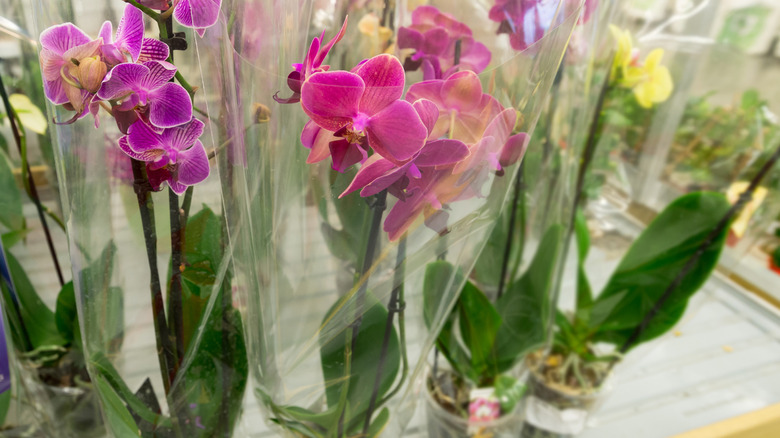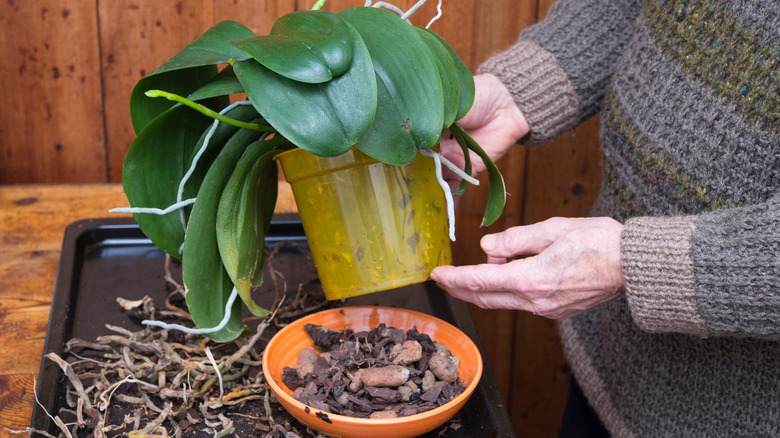What To Know Before Attempting To Repot Your Orchid From Aldi
With their exquisite flowers, orchids convey a sense of luxury, making it hard to resist when you see a supermarket orchid being sold at an affordable price. But after bringing their Aldi orchids home and inspecting the plant's pot, some people are disappointed. When you look closely at your Aldi orchid, which is most likely a moth orchid (Phalaenopsis spp.), you may see a pot without drainage holes or with a removable plug. The reason savvy indoor gardeners find this alarming is that one common problem that prevents moth orchids from growing is a lack of drainage. Growing an orchid in a pot without drainage can result in rotten roots and leaves.
You don't need to forego purchasing an Aldi orchid altogether. Tempering your expectations regarding the pot can prevent disappointment. Your orchid from Aldi is likely planted in a decorative container, also known as a cachepot, with or without an inner liner. As mentioned, the cachepot probably has no drainage holes, or the holes are plugged, to prevent water leaking onto the windowsill, furniture, or floor. The liner is typically made from clear plastic. It has drainage holes and sometimes also slots that allow the orchid's roots to breathe. People who have never attempted to take the liner out of the cachepot may have been overwatering their plants. They'll quickly discover a hard orchid-growing truth — rotting roots, which are revealed when they eventually decide to repot their houseplant.
How to repot an Aldi orchid and dealing with root rot
Even people who know what to look for when buying an orchid from a store like Aldi may prefer to repot their orchid. However, before relocating your new houseplant, make sure the step is even necessary. If you water the plant and the water drains through the pot's holes, you can leave the orchid in situ. Phalaenopsis species, the genus most often found at Aldi, only need to be repotted every two to three years. If you never removed the liner from the cachepot after bringing your new orchid home, your plant's roots have likely been sitting in stagnant water for a while. To save yourself and your orchid from failure, repot the plant into a container with adequate drainage holes right away.
Since orchids can be finicky plants, here's how to correctly repot them. First, choose the right type of growing medium. People sometimes make the mistake of transplanting orchids into potting soil. Most — about 70% — of orchid species are epiphytes. In the wild, they cling to tree branches using aerial roots; they don't grow in soil. Newbie Aldi orchid growers should use a bark-based growing medium. Another mistake people make is not considering orchid pot size. These beautiful plants prefer small pots, just large enough to contain the roots of the plant. Without these slightly snug conditions, the orchid may not produce its beautiful blooms. Finally, before you repot your orchid, trim off any brown, rotten roots caused by poor drainage.

